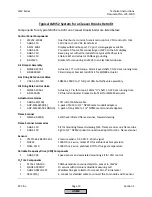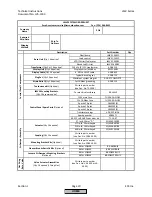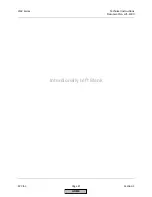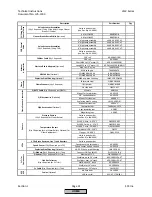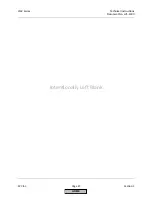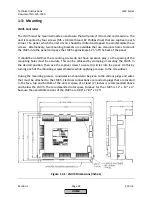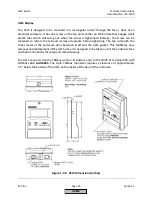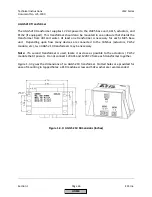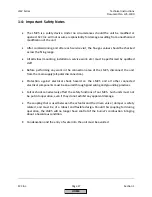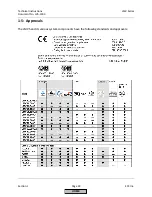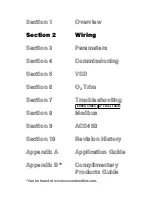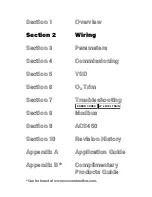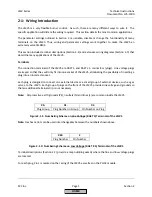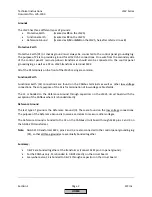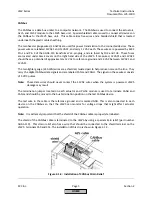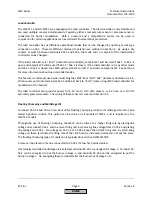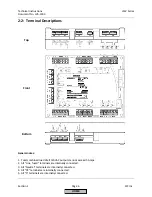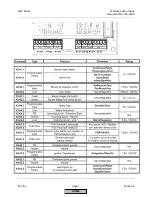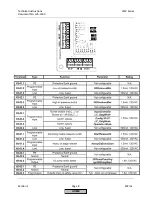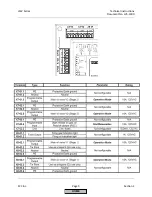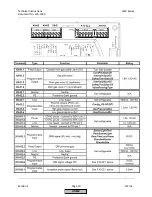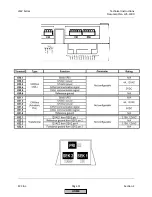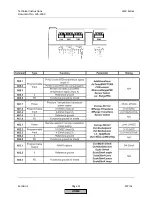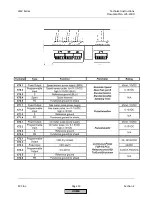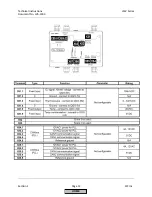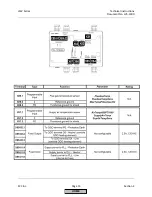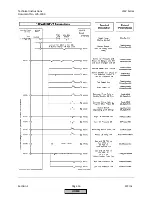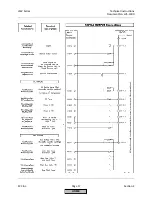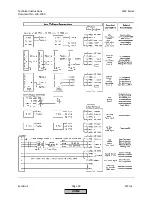
LMV Series
Technical Instructions
Document No. LV5-1000
SCC Inc.
Page 3
Section 2
CANbus
The CANbus is a data bus similar to a computer network. The CANbus is used to connect the actuators,
AZL5, and PLL52 module to the LMV5 base unit. Special shielded cable is used to connect all devices on
the CANbus to the LMV5 base unit. This cable carries five wires and a braided shield that is located
underneath the plastic cable sheathing.
The two heavier gauge wires (16 AWG) are used for power transmission to the connected devices. These
power wires are labeled 12VAC1 and 12VAC2, and carry 12 VAC each. These wires are powered by SEK2
Pin 1 and Pin 4 of the AGG5.210 transformer’s 4-pin plug, and are fused by FU2 and FU3. These fuses
are located under black covers on the right hand side of the LMV5. If measured, 12VAC1 and 12VAC2
should have a potential of approximately 12 VAC to reference ground and 24 VAC between 12VAC1 and
12VAC2.
The two lighter gauge (24 AWG) wires are a shielded, twisted pair to help reduce noise on the line. They
carry the digital CANbus data signals and are labeled CANL and CANH. The signal on these wires consists
of 5 VDC pulses.
Note:
These data wires should never contact the 12VAC wires when the system is powered. LMV5
damage may result.
The termination jumper located on each actuator and PLL52 module is used to terminate CANH and
CANL and should be moved to the bus termination position on the last CANbus device.
The last wire in the cable is the reference ground and is marked GND. This is also connected to each
device on the CANbus so that the LMV5 can monitor for voltage drops that might affect actuator
operation.
Note:
It is extremely important that the shield of the CANbus cable is properly terminated.
The shield of the CANbus cable is terminated to the LMV5 by using a special strain relief (part number
AGG5.110). This strain relief also has a wire that should be connected to the shield terminal on the
LMV5, terminals X50 and X51. The installation of this clip is shown in Figure 2-1.3.
Figure 2-1.3: Installation of CANbus Strain Relief
HOME
Summary of Contents for LMV 5 Series
Page 2: ...Intentionally Left Blank ...
Page 41: ...LMV Series Technical Instructions Document No LV5 1000 SCC Inc Page 7 Section 2 HOME ...
Page 42: ...Technical Instructions LMV Series Document No LV5 1000 Section 2 Page 8 SCC Inc HOME ...
Page 43: ...LMV Series Technical Instructions Document No LV5 1000 SCC Inc Page 9 Section 2 HOME ...
Page 44: ...Technical Instructions LMV Series Document No LV5 1000 Section 2 Page 10 SCC Inc HOME ...
Page 45: ...LMV Series Technical Instructions Document No LV5 1000 SCC Inc Page 11 Section 2 HOME ...
Page 46: ...Technical Instructions LMV Series Document No LV5 1000 Section 2 Page 12 SCC Inc HOME ...
Page 47: ...LMV Series Technical Instructions Document No LV5 1000 SCC Inc Page 13 Section 2 HOME ...
Page 48: ...Technical Instructions LMV Series Document No LV5 1000 Section 2 Page 14 SCC Inc HOME ...
Page 49: ...LMV Series Technical Instructions Document No LV5 1000 SCC Inc Page 15 Section 2 HOME ...
Page 50: ...Technical Instructions LMV Series Document No LV5 1000 Section 2 Page 16 SCC Inc HOME ...
Page 51: ...LMV Series Technical Instructions Document No LV5 1000 SCC Inc Page 17 Section 2 HOME ...
Page 52: ...Technical Instructions LMV Series Document No LV5 1000 Section 2 Page 18 SCC Inc HOME ...
Page 53: ...LMV Series Technical Instructions Document No LV5 1000 SCC Inc Page 19 Section 2 HOME ...
Page 54: ...Technical Instructions LMV Series Document No LV5 1000 Section 2 Page 20 SCC Inc HOME ...
Page 55: ...LMV Series Technical Instructions Document No LV5 1000 SCC Inc Page 21 Section 2 HOME ...
Page 373: ...Intentionally Left Blank ...

